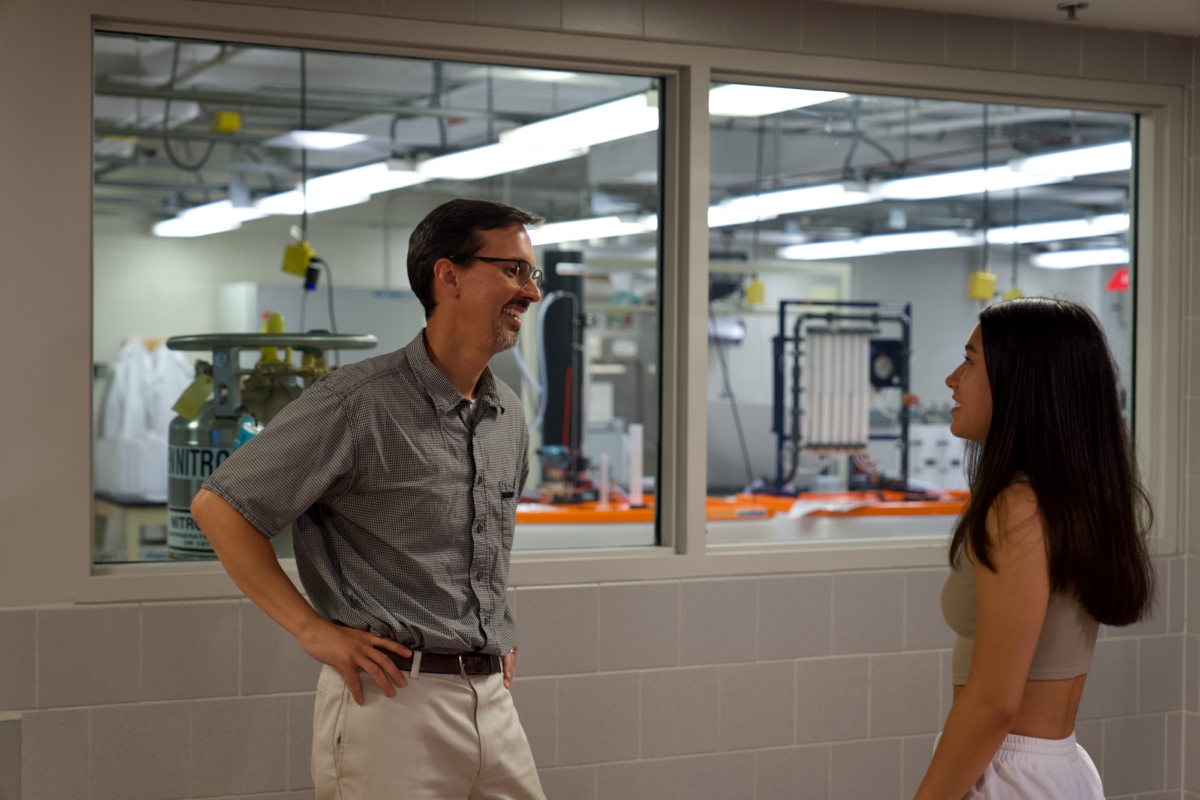This fall marks the first semester of Iowa State offering a major in biomedical engineering, though the topic is not new to campus. Iowa State began offering a bioengineering minor in 2009, which was refocused to a biomedical engineering minor in 2014.
The major now serves as a recruiting opportunity for the university, according to Ian Schneider, professor in charge of the biomedical engineering program.
Students have been asking for the minor to be offered at a major at a high rate, according to Schneider.
“The College of Engineering would continually get a request from the Office of Admissions and registrar’s office about ‘do we have a biomedical engineering major?’” Schneider said. “And in fact, admissions said, by far, that was the major that was most frequently asked for by incoming students that we didn’t have.”
Schneider said Iowa State’s lack of a biomedical engineering major was losing potential students for the university.
“We were kind of leaving somewhere between 70 and 90 students a year on the table that, they ended up not coming to Iowa State but doing BME somewhere else,” Schneider said. “And that 70 or 80 wasn’t all of them.”
Schneider said the number is based on surveys, and he estimates the survey yield was around 20%-25% of the actual number of students who strayed away from Iowa State for the lack of the major. “We were leaving a tremendous number of students on the table not having this program,” he said.
The interdisciplinary nature of the program is powerful, given Iowa State’s wide range of courses of study, and the major came together primarily with staff that Iowa State already employed, Schneider said.
“It’s not like we had no faculty in this area at all,” Schneider, who has extensive research experience in biomedical engineering, said. “We actually had a pretty strong footprint in biomedical engineering.”

Schneider noted that Iowa State has already been researching nano vaccines, studying computational fluid dynamics relating to cardiovascular systems, the spread of infectious diseases and more.
“We already had this kind of group of faculty that have this understanding of BME, so it wasn’t like hey, ‘let’s come up with this undergraduate major, let’s go find a bunch of faculty that know how to teach it,’ we already had those people here,” Schneider said. “It’s just they were teaching in different disciplines.”
Iowa State also has a unique opportunity by having the College of Veterinary Medicine to collaborate with.
“Ultimately BME is focused on human health,” Schneider said. “But I think there’s a lot you can get out of comparative medicine when looking at what we’ve learned in the context of veterinary medicine.”
Comparative medicine is a strength of Iowa State’s biomedical engineering program, according to Schneider.
“There are people over at the vet school right now that collaborate with folks in the College of Engineering, and they’re very interested in this program,” Schneider said. “And I think having this kind of vet school interaction, there’s something very powerful about knowing how disease progresses in a lot of different animals and comparing that to humans.”
Schneider was appointed to head a task force and gathered a group of people working in the disciplines involved in biomedical engineering. After sending the proposal through multiple committees and governing bodies, the Iowa Board of Regents approved the major in February.
Now, students in pre-biomedical engineering are taking their first classes. One student, Keira Feliciano, a freshman, chose Iowa State partly for the opportunities a biomedical engineering program presented.

“I always want to look through the lens of improving lives and helping others,” Feliciano said. “And I think I can do that with a biomedical engineering major.”
Feliciano said she is leaning towards medicine for a career and following the pre-med path.
Feliciano is in the biomedical engineering learning community and is a student in BME 160X, a class that introduces students to the world of biomedical engineering and solving problems as an engineer.
An internship a few years ago opened Feliciano’s eyes to the field.
“I learned the mechanics of applications of bioengineering,” Feliciano said. “And then I got to make my own innovation, which is really cool. And then I kind of like honed down on biomedical because I just think there’s so much potential in medicine, and healthcare.”
Leah Miller, a sophomore in pre-biological/pre-medical illustration, is planning to switch to biomedical engineering. Miller is taking classes in preparation for applying to the biomedical engineering program.
“I went to my first BME class yesterday,” Miller said. “And it was just like, I was sitting there and I was just like, this is where I need to be. It just felt like this is what I want to do.”
Miller said biomedical engineering is interesting to her because of the potential to help others.
“[Biomedical engineering] is something that I can personally relate to,” Miller said. “I personally have kidney disease, so it’s the thought of like, one day I could be working on a bionic kidney.”
The professor-in-charge is optimistic, having received approval from the university, he’s now feeling the excitement from students.
“There’s a lot of passion in the students to solve some really big challenges in healthcare right now and it’s fun to see them so excited and so kind of driven by that motivation,” Schneider said.
Anyone is welcome to join BME for a first year in the program, but for now, admission is limited to 40 when students enter their second year.
“We are controlling enrollment just to make sure the first couple of cohorts get done right and they have a really good quality experience,” Schneider said.
The admissions process is based on cumulative GPA, a short answer question and performance in certain classes relating to the major.














